|
Natural Family Planning (NFP) isn't always sunshine and rainbows, but this article is! If you want to read about the challenges of using NFP, read Natural Family Planning is Hard. If you aren't familiar with what NFP is or want to know about the types of NPF, read all about it in Not Your Grandma's Family Planning. Now that you're caught up, let's look at my top 10 reasons to use NFP! 1. NFP actually worksEven the rhythm method is 88% use effective for avoiding pregnancy, which is the same as withdrawal and better than the condom (85%), cervical cap (85%), and spermicides (72%). The more modern methods of Billings and Creighton are better for people actually using the method than all other methods of birth control except the arm insert, IUDs, Vasectomies and Tubal Ligations. The chart I made below clearly shows that natural methods (green) are on par with contraceptives (orange) with both use effectiveness and method effectiveness. See Not Your Grandma's Family Planning for effectiveness sources and more information about the different methods of avoiding pregnancy. When coupled with NaPro Technology (seeing a Creighton trained doctor, like the Pope Paul VI Institute in Omaha, NE or the Fertility and Midwifery Care Center in Fort Wayne, IN), the success rates are up to 80%. The chart below separates cause of infertility and pregnancy success rate. 2. NFP has no harmful side effectsBecause Natural Family Planning does not use hormones or devices to inhibit fertility, you can avoid putting yourself at risk for cancer, blood clots, cramping, uterine perforations, decreased libido or the discomfort and irritation many devices can cause. According to the American Stroke Association, women on even low-estrogen birth control pill have double the risk of stroke. A 2017 Danish study, which followed 1.8 million women for nearly 11 years and was reported by The New York Times, found that progestin-based birth controls increase the risk of breast cancer by 20% compared to non-users. Conversely, estrogen-progestogen hormonal contraceptives (known as combined birth control) decreases ovarian cancer by 21%. That being said, the occurrence of breast cancer increased by 13 per 100,000 person years while ovarian cancer decreased by only 3.2 per 100,000 person years. Therefore, even though the percentage decrease is slightly better for ovarian cancer, the NUMBER OF PEOPLE who get breast cancer who have taken hormonal contraceptives outweighs the number of people who don't get ovarian cancer after taking oral contraceptives. Also, you must take a combined method of birth control to receive any cancer-inhibiting effects while all hormonal birth controls increase the likelihood of breast cancer. Even sterilization has adverse side effects, including anatomical, hormonal, immunological, psychological and social changes that can can be found here. The tongue-in-cheek "commercial" below covers the negative effects of birth control while advocating for men to take responsibility of the family planning. Since most people marry committing to love each other for life, why not love each other by SHARING the responsibility and avoid putting either person at risk for adverse side effects? In this article, three couples share their journey with artificial birth control, sterilization and natural family planning. 3. NFP users have better marriagesThe Dyadic Adjustment Scale allows couples to self-report their marital satisfaction as well as their ability to handle conflicts, share responsibility and relate to their spouse. The University of Chile and the University of Los Andes conducted a study of 69 couples using Natural Family Planning (NFP) and 69 couples using Artificial Methods of Contraception (AMC). The NFP group had a significantly better score on the Dyadic Adjustment Scale. After controlling for age, socioeconomic status, time in the relationship and religious commitment, the NFP group had a 47 percent greater probability of having a functional marital score compared to the AMC group. Most studies that find that couples who use NFP have better marriages argue that religious people have better marriages and most NFP users are religious. I love this graph, made by Life Issues, because it separates the GSS results (a national survey) into Catholics (who make up 90% of NFP users), NFP users and total population to show that Catholics in general are on par (actually slightly less successful) than the general population, but NFP users feel vastly more successful in their relationships than the other two categories. 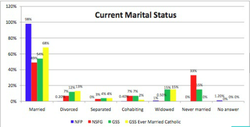 In a similar graph, Life Issues included two national surveys (GSS and NSFG) to compare NFP users to Catholics and the general population. Catholics are more likely to be married AND more likely to be divorced than both national surveys, but the divorce rate for those using NFP is only 0.20% while 98% of NFP users are married. "The most dramatic findings from this study of ever married, reproductive age women in the US indicate that the ever use of the most frequent methods of family planning, i.e. the hormonal pill, sterilization, condom use, and abortion were the most significant factors that increased the likelihood of divorce compared with ever married, reproductive age women who never have used those means of family planning." Richard J. Fehring, The Influence of Contraception, Abortion, and Natural Family Planning on Divorce Rates as Found in the 2006-2010 National Survey of Family Growth. 4. NFP is (can be) cheapAustin and I are pretty frugal people. We splurge on vacations, our house and ice cream. We put about any other non-necessity on our Christmas list. Before we got married, I charted on a free app that predicted my fertile days. These apps take 6-12 months of recording your cycle to most accurately predict future cycles, but even still I could tell it wouldn't be accurate enough for us. In the case of NFP, free/cheap isn't really the way to go. If you're serious about using NFP, a course with individual sessions will best help you understand your fertility. The price of NFP depends on the method used and if it's sponsored by your church/diocese. I don't know how many methods are set up for insurance coding, but if the method you want is, ask your insurance company about coverage for the following codes:
The following prices are based on the respective method's website. Natural Family Planning
Artificial Methods *We will calculate one-time use contraceptives as 1.5 times a week as that seems about average after looking at numerous sources. For permanent solutions, I calculated by subtracting average age of procedure from average age of menopause (51). All prices from plannedparenthood.org.
Natural Family Planning has similar start-up costs as contraceptives, but little to no cost after the method is learned unless using disposable test strips or an app with an annual fee. If insurance covers your birth control, then this argument is a mute point. 5. NFP may decrease infidelityThere aren't any studies directly linking contraception to infidelity, but I would like to point out some theories, correlations and evidences for your consideration. First, Natural Family Planning requires self control and resisting an attractive, friendly, flirty co-worker/in-law/stranger-you-met-at-a-coffee-shop requires self-control. The factors that contribute to infidelity are complex and numerous, but I would argue that practicing self-control with someone who encourages you (your spouse) can make it easier to use self-control when someone tries to lead you astray. The Birth Control Pill debuted in 1960. In 1968, Pope Paul VI predicted that widespread use of contraception would result in infidelity and moral decline, a loss of respect for women, an abuse of power (governments would force people to use contraception/get sterilized/have abortions), and human's inability to accept our own limitations. In 1978, the secular scientist Westoff predicted that the birth control pill would result in couples getting married later in life, fewer couples getting married, more couples cohabiting, women reproducing below replacement level, couples experiencing high levels of divorce and couples thinking that marriage for life is not feasible. I could spend a whole blog writing about these predictions, but for now I will give you a graph showing that the divorce rate drastically increased 10-15 years after the introduction of the birth control pill and has remained fairly constant ever since. Since studies showing infidelity rates from the 1960's to today do not exist, you will have to draw your own conclusions on the other outcomes of these predictions. 6. NFP increases communicationBecause couples must talk about fertility before engaging in intercourse if trying to avoid or achieve pregnancy, Natural Family Planning naturally increases communication between couples. The Creighton Model surveyed couples to track their communication. 100% of couples indicated they had discussed their decision to avoid or achieve pregnancy. 89.6% verbally discussed whether they would or would not have intercourse based on fertility (some couples choose non-verbal cues, like a teddy bear or different lighting/clothes to indicate fertility). 92.8% of couples indicated that Creighton encourages verbal communication about deciding to have intercourse. Comparing Creighton to their previous method, 72.9% of couples said their verbal communication regarding deciding to have intercourse increased, while 18.8% indicated it remained the same. The remaining 8.3% did not answer. As one man put it, "if you can talk about mucus, you can talk about anything." "Since we speak about our fertility on a daily basis (my husband charts and asks my observations daily), NFP has helped our level of communication remain very deep and intimate and always above-board, open and honest." Anonymous Survey Respondent In Creighton, we not only help couples with their verbal communication, but talk about their non-verbal communication too. An important aspect of successfully implementing Natural Family Planning is distinguishing between affirming touch and arousing touch. The difference depends on the individual person, so we encourage couples to talk about what it means for them (after they leave the session-as an instructor, I do not need to, nor want to know those details!). These conversation starters occur regularly during follow-up sessions and many couples leave their sessions feeling encouraged and empowered to increase their spiritual, physical, intellectual, creative and emotional communication. "Because it required mutual responsibility, respect, and communication, it has definitely helped us in our marriage relationship. Because periodic abstinence requires us to express our love for each other in ways other than intercourse, it had helped us to expand the 'vocabulary' of love." Anonymous Survey Respondent 7. You can switch between avoiding and achieving at any pointThis one is pretty straight-forward. With NFP, you don't have to wait for your hormonal contraception to wear off, for an appointment to remove your device or for surgery to reverse your sterilization before trying to achieve pregnancy. According to Very Well Family, 20% of women achieve pregnancy the first month of stopping the birth control pill, slightly more than half by six months and 80% by one year. Implants and hormonal IUDs can take longer while the shot can take 6 months to 2 years to wear off enough to achieve pregnancy! Comparatively, 75% of couples achieve pregnancy the first time using a fertile day with Creighton and 98% by 6 months. At the 6 month mark, we focus on investigating causes of infertility if we haven't already identified potential issues. If you were trying to achieve pregnancy and something comes up so that you need to avoid, you can change your intention that day! You don't need to run to the store to buy supplies, make a doctor's appointment or wait for the pharmacist, just avoid intercourse on days of fertility and ta-da, you've switched from achieving to avoiding. 8. NFP allows you to know your body (or your spouse's body, if you're a man)Probably my favorite practical part of NPF is knowing when my period should come or when to take a pregnancy test. Even women with regular cycles are often surprised by how much each month varies. The time between period and ovulation fluctuates greatly, especially during times of stress. After ovulation, women get their periods in 13 +/- 4 days. Once an individual women knows her average, she can expect a period in +/- 1.6 days from that average. Having an accurate 3 day range for the beginning of your period allows women to be prepared for their flow, either by having supplies ready or by preemptively taking pain medication if needed. We've found that many women benefit from starting ibuprofen the day before their period should start. Women and their spouse can both benefit by mentally preparing for PMS symptoms. During follow-ups, we help women and their spouses talk through PMS coping mechanisms and strategies. "[NFP was] helpful to understand PMS symptoms for myself and my husband because of our awareness of my cycle. Thus, helped keep our moods/reactions/issues in balance/in perspective." Anonymous Survey Respondent 9. NFP is good for the environmentThe website greenpeace.org sounded like a good source for figuring out the biodegradability of condoms, but they said nobody really knows. Their biggest concern was the chemicals in the condoms and packaging. Interestingly enough, lambskin condoms are supposed to be more biodegradable, but the website doesn't recommend them because they come from an animal and they don't protect against STDs. Hormonal contraceptives wreak havoc on our water system! Boulder University studied fish upstream and downstream from a wastewater treatment plant in Boulder Creek and South Platte. After seven days of exposure to both the effluent and upstream water, the adult male fathead minnows became feminized. They showed eleveated levels of vitellogenin, a protein normally produced by females, and they started looking and acting more like females. The female white suckers downstream had asynchronous ovarian development that the females upstream did not have. The contaminants downstream were ethinylestradioal (a chemical used in most contraceptives) and other natural reproductive steroids. We can't blame the change solely on contraceptives, as plastics, detergents and pesticides also released estrogen-related chemicals. You can read the study here, and find more articles on the Boulder University BASIN website. Similarly, the University of Exeter in England found that 1/5 of male fish are feminized, some even producing eggs, due to hormonal contraceptives, cleaning agents, plastics and cosmetics in the water. Likewise, the University of Lund in Sweden studied three species of fish (salmon, trout and roach) and found that the oestrogen in the water from birth control pills caused the fish to have difficulties procreating and catching food. 10. Couples ENJOY using NFPMarquette University College of Nursing sent surveys to 1,400 couples known to use either the Billings Ovulation Method or Creighton Model of NFP. Unfortunately, Only 344 couples responded. Of those who responded, 74% of the open-ended responses were positive. Many couples said NFP resulted in stronger bonds, better communication and improved knowledge. One way to identify satisfaction is continuation rate. While more than half of oral contraceptives users stopped using oral contraceptives after 6 months, only 11.3% of Creighton users stopped after a full year. Personal experience also speaks volumes about a person's satisfaction. Below, Megan encourages another NFP user who was in the early stages of learning NFP and feeling very discouraged and frustrated. In an interview with Family Foundations, Nick said, "The biggest surprise is what started to happen in our marriage after we started using NFP. I started to feel more in synch with Monica. By that, I mean we wanted to have sex around the same time. We also started to enjoy our sex life a lot more. Monica was more responsive and she was in the mood more often. I found that after using NFP, we were having sex more frequently. In fact, I read a research study that showed that this is common for couples who use NFP." Family Foundations, July/August 2010, 31. I would agree with Nick that there is something special about using NFP. While nursing Alexis, I/we decided to "just wing it" and not chart for a while. I found the absence trying to avoid or achieve much less exciting than looking forward to the fertile/infertile days. I know some couples struggle with the lack of spontaneity, but I find the rhythm of NFP helps balance our romantic life.
0 Comments
Leave a Reply. |
Are you looking for a specific blog? Find it here!
AuthorStephanie started her Creighton Model journey in early 2014 and entered the program to instruct others in 2017. She enjoys equally adventuring in the great outdoors with family and friends and reading a good book with a cup of tea. For more details, visit her About Me page. Archives
March 2021
Categories
All
|

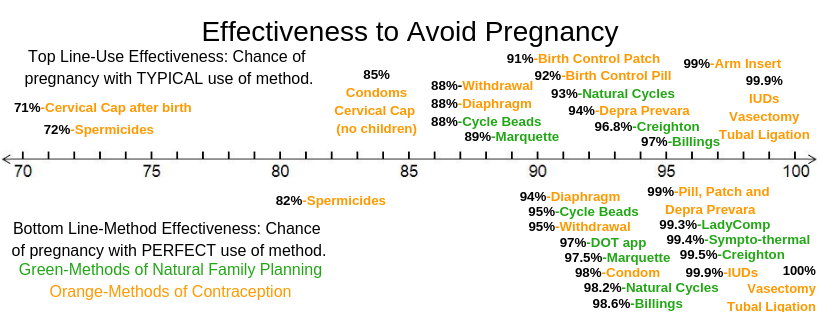
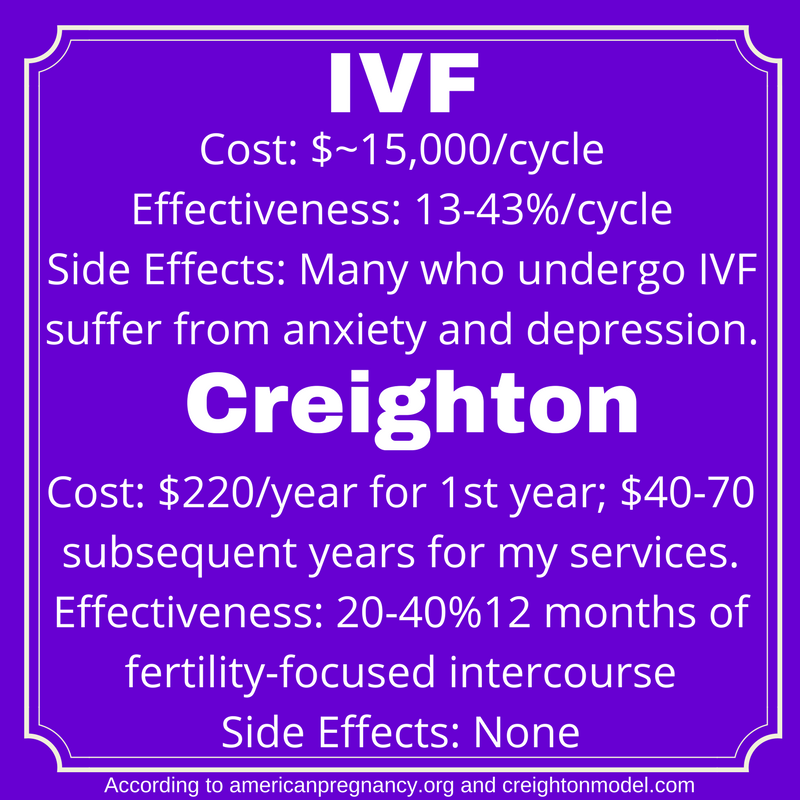
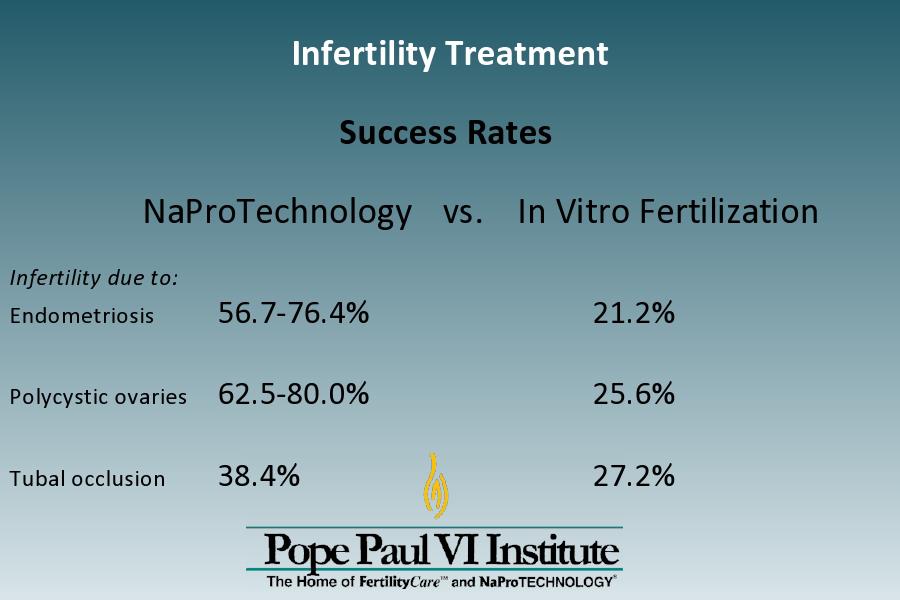
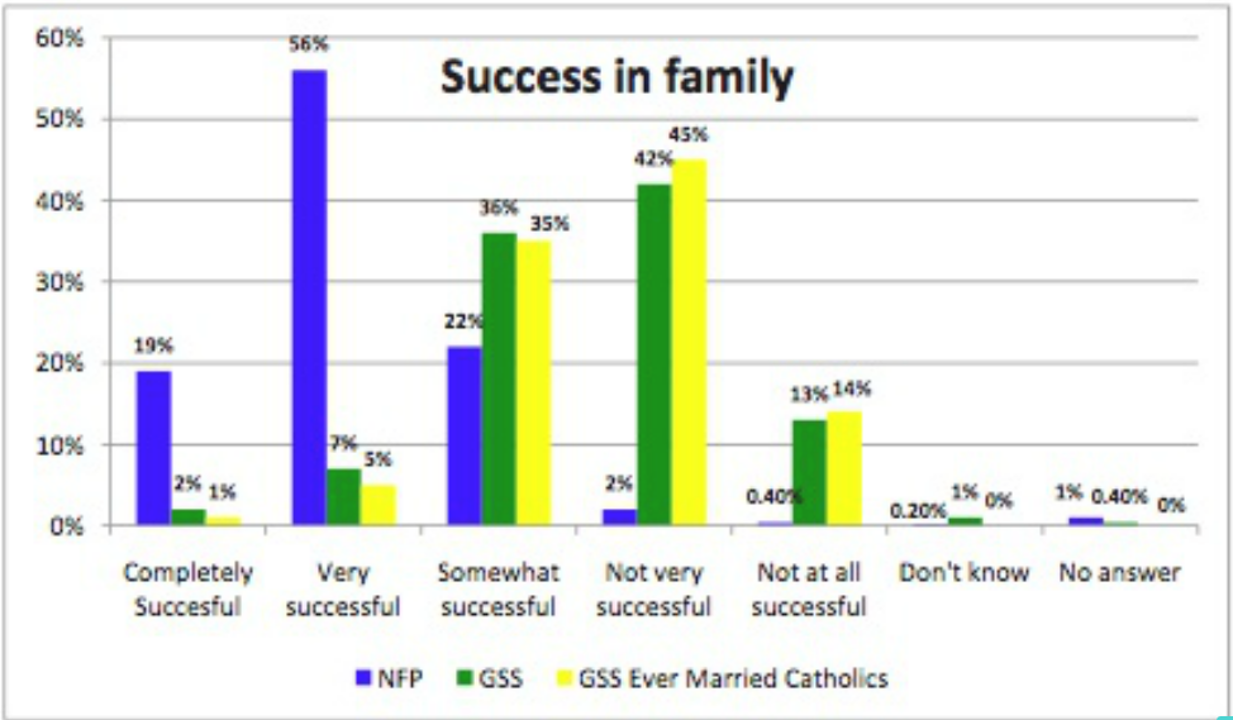
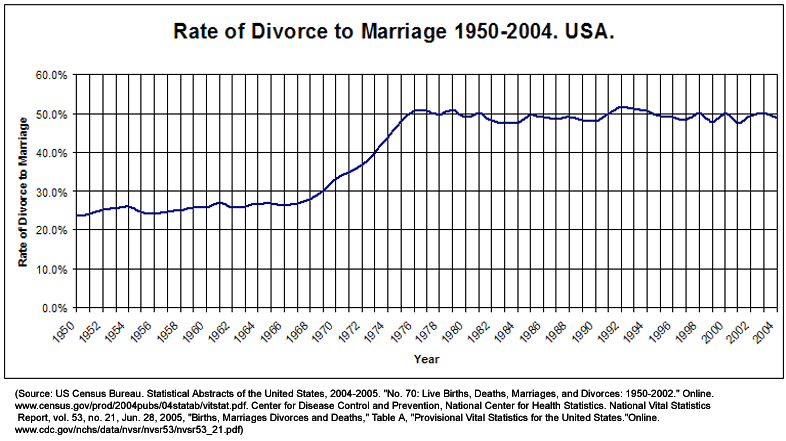
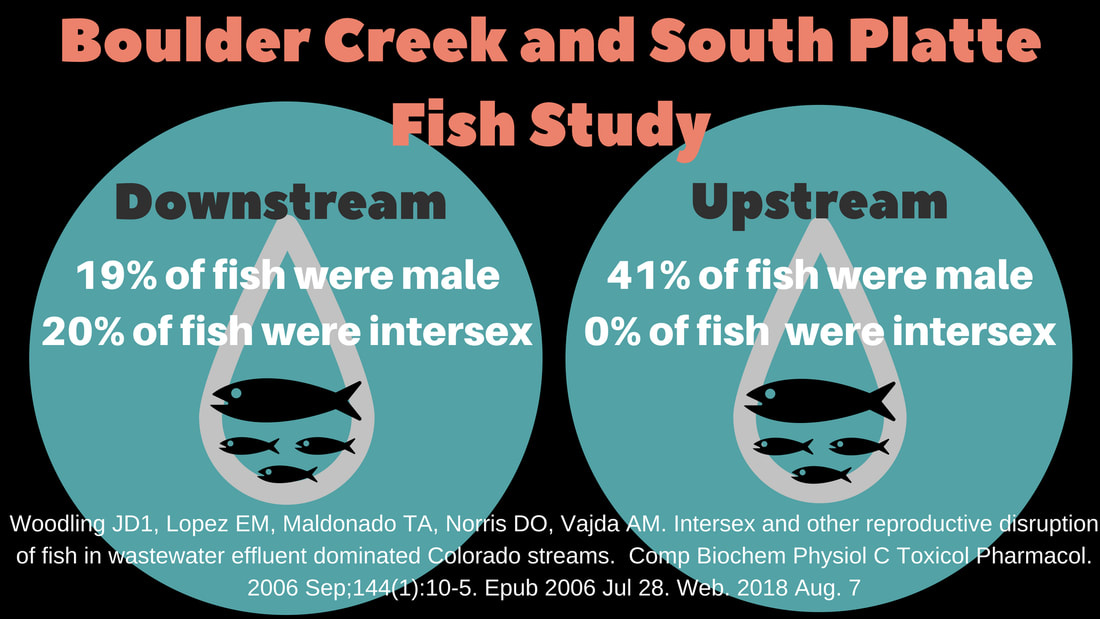
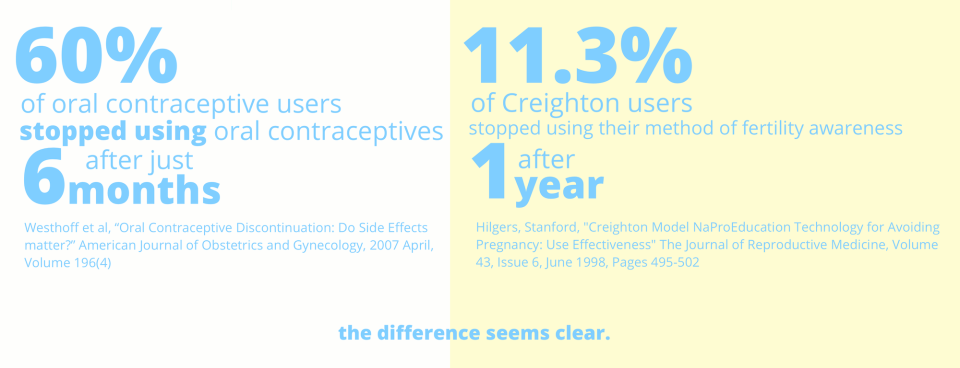
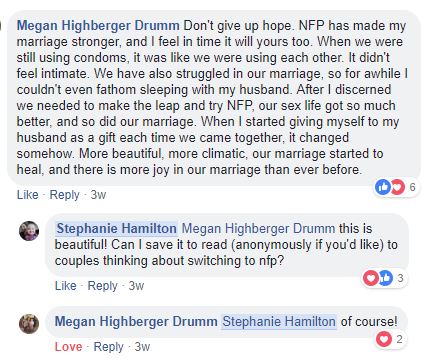
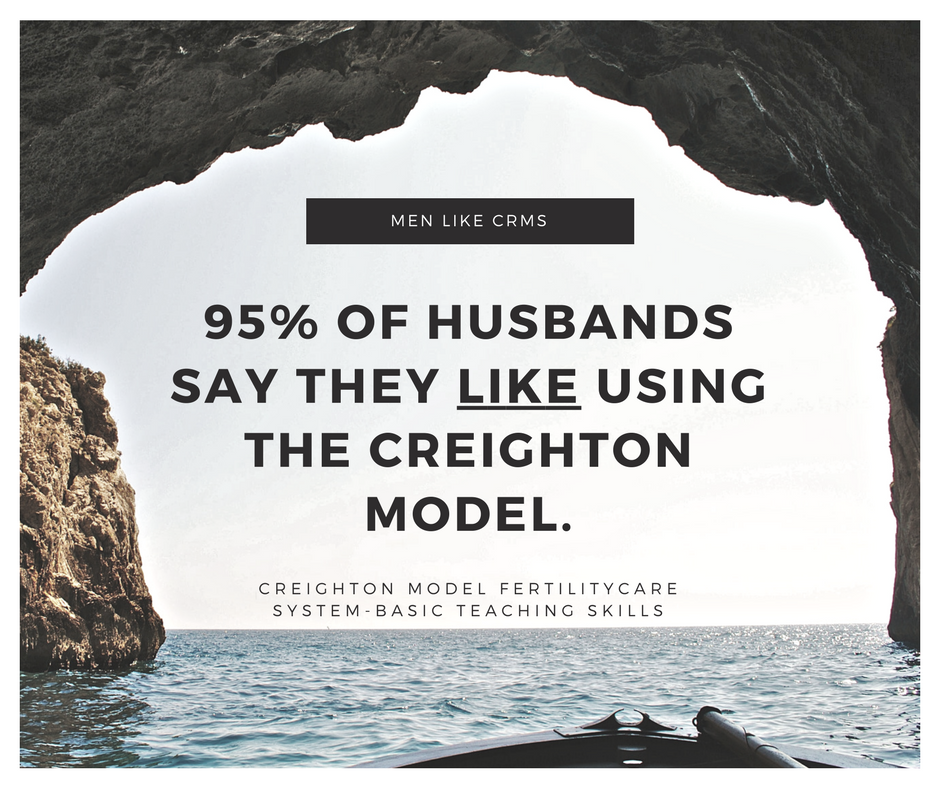
 RSS Feed
RSS Feed
